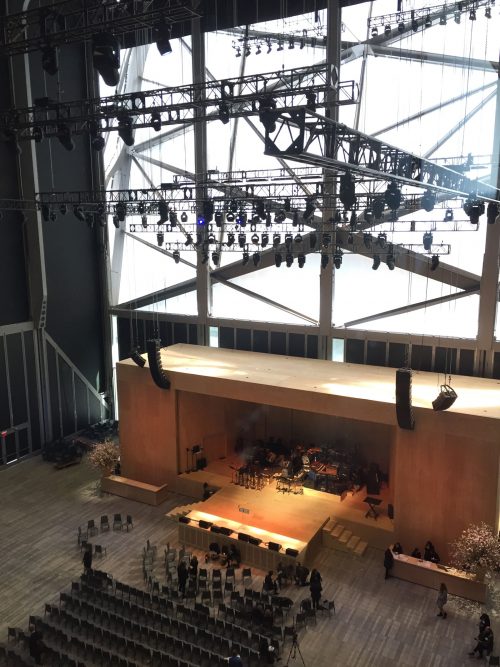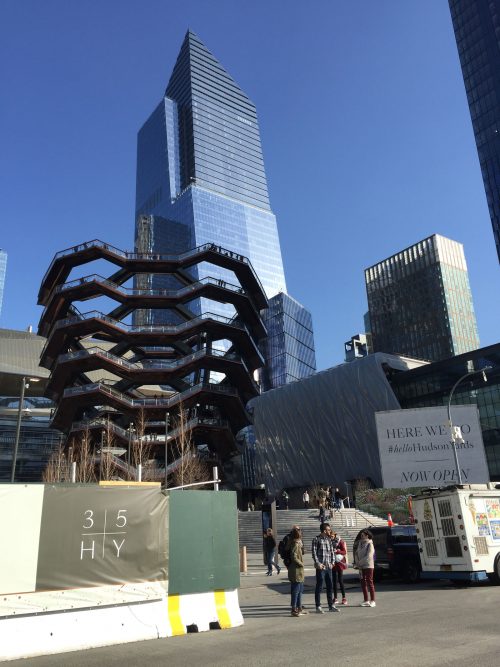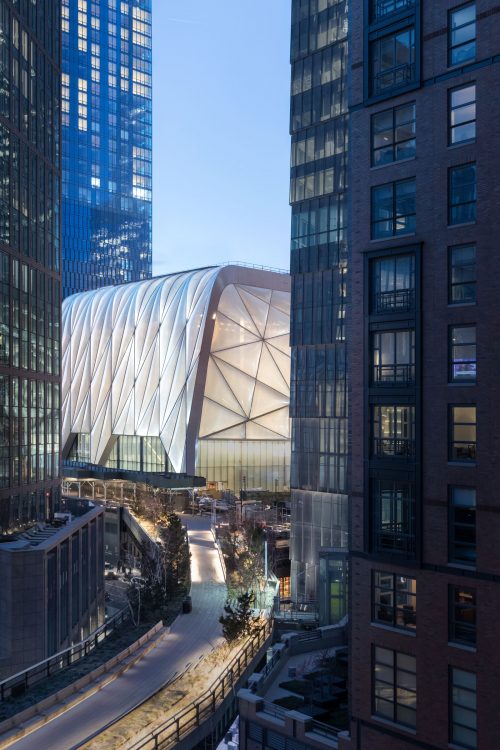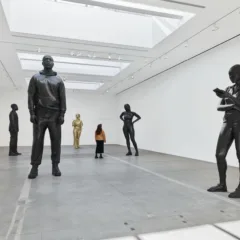Author Preface: April 5th marked the long-anticipated opening of The Shed in New York City. I got a behind-the-scenes tour at the Press Preview, when the building was still under construction and during a rather hectic time for the operations staff. And, in the midst of construction touch-ups and the chaos of rehearsing for the big debut, I got to interview lead architect, Liz Diller, of Diller Scofidio & Renfro.
After 11 years in the making, New York City rolled out its latest cultural center at Hudson Yards, The Shed, whose plastic wrap-like bloated structure resembles a quilted winter coat in the profile of a three-legged buffalo. Aptly named, The Shed’s open structure slides in and out from a more conventional 8-story cultural center on six human-sized wheels, allowing additional interior performance space or 20,000 square foot of public plaza when the structure is nested. The center includes a bar, book shop, rehearsal space, theater, as well as gallery and multi-purpose event space with operable doors that open onto the expanded 120’ tall performance area. Not to mention, the entire Hudson Yards complex spans over a train yard with thirty active tracks.
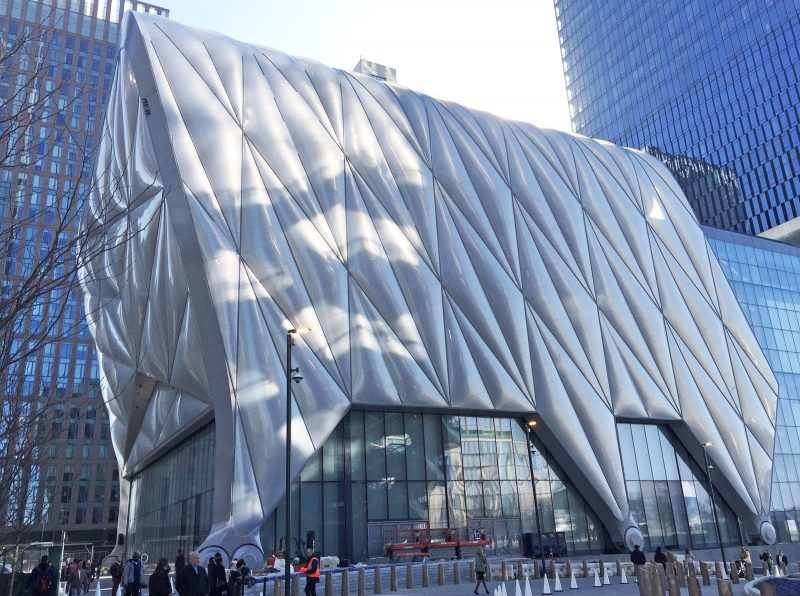
Designed by New York starchitects Diller Scofidio & Renfro (also design collaborators of the adjacent High Line) with support from the Rockwell Group, the structure was tasked with being like no other building in New York- one that can accommodate the unanticipated future needs of the arts beyond the 21st century. Hans-Ulrich Obrist, internationally renowned art critic and curator of The Shed, references the design as paying homage to the avant-garde ideas of the late British Architect, Cedric Price, and his 1964 proposal for “Fun Palace” – a flexible “anti-building” made of shipping containers within an old power station, programmed with an infinite range of ephemeral cultural and educational programs.
A space designed to be responsive to community and future needs
The Shed’s lead architect, Elizabeth (Liz) Diller, who, on behalf of Diller Scofidio & Renfro, will receive this year’s Louis Kahn Award, notes the design’s open and versatile nature was also inspired by industrial technology, specifically the rail crane and the shed, defined as an economical roofed structure used as storage space or a workshop. Although a price tag of $404 Million is far from economical even by New York standards, the ability of the voluminous space to flex with the needs of varying audiences and performances will certainly hold value in the long run. “My hope for the building is that it is a perpetual work in progress, that is it’s always getting smarter, always getting more agile…that this building will respond, in real time, to the challenges brought onto it by artists and hopefully it will challenge artists back,” Liz Diller noted in her opening remarks.
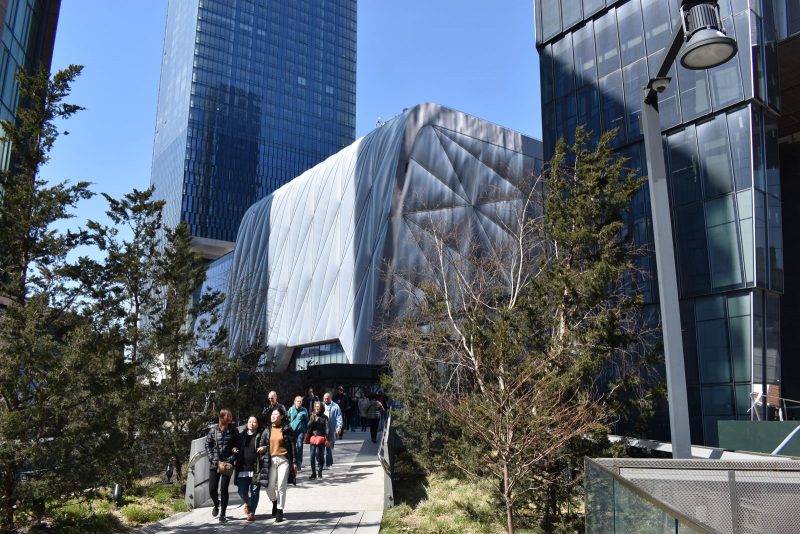
The sinewy steel patterning of the telescoping shed was designed as a kit-of-parts, prefabricated in Italy. The puffy plastic material bulging out of the steel is Ethylene tetrafluoroethylene, aka ETFE, an extremely durable and lightweight polymer material that allows light to permeate at only 1% of the weight of glass. As a result, the energy-efficient motor-driven structure can expand or contract using the horsepower equivalent to one Toyota Prius engine, according to Liz. She refers to the design as an “Architecture of infrastructure. All muscle no fat.”
Despite its innovative design and impressive engineering, The Shed is just an iconic piece of architecture in the city’s expansive collection. The controversial Hudson Yards has been curated to represent New York’s new epicenter, boastfully branded with flashy follies, like the neighboring Vessel designed by Thomas Heatherwick, and glassy towers anchored with high-end retail. This “new” side of the city epitomizes the dichotomy of New York, as well as several American cities – a desire to create socio-economically inclusive development while succumbing to the financial incentives of private, profit-driven developers.
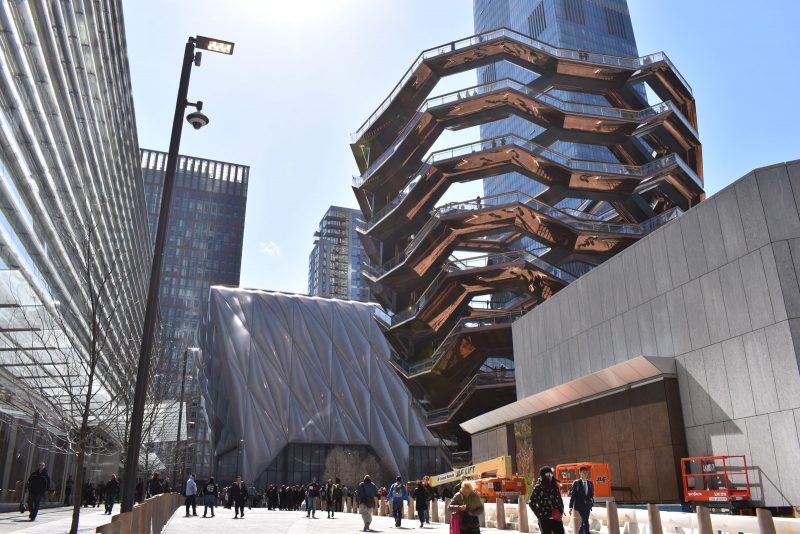
Non-Profit Mission seeks to serve all artists and all audiences
But what makes The Shed significant among the superficial glitz of its neighbors is its non-profit mission (a registered 501c3 organization) to support diverse artists of all backgrounds and stages in their career and to make the arts accessible to an inclusive audience. Alex Poots, Artistic Director and CEO, adds there will be no hierarchy among the artists; emerging local talent will be performing on the same stage as Bjork and other renowned performers. Tamara McCaw, The Shed’s Chief Civic Program Officer, spoke of The Shed’s mission to encourage access to underserved communities in New York by providing free and reduced cost tickets, as well as several art fellowships for emerging talent.
It’s important to note that The Shed did not start out as a project. It didn’t have a client or budget but was merely a dot on the map with a vision for a cultural institution. Collaborating architect David Rockwell commented at the Press tour, “An ethos was designed before a building.” The project took 11 years because it was not just designing a building but creating an institution, one that evolved through a collaborative process and turned into an independent, nonprofit cultural organization. It is the combination of vision and “naiveté” that Liz credits for the project’s innovation and success.
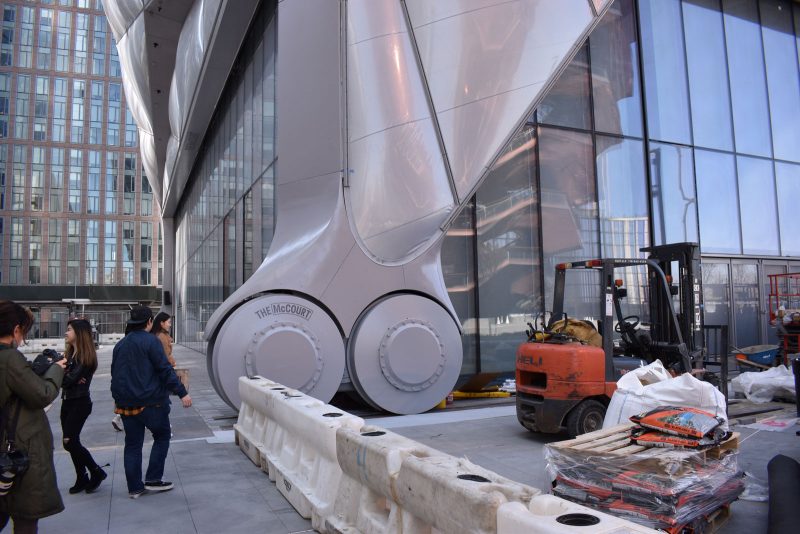
New York is about real estate (fast) and architecture is slow
I asked Liz her thoughts on the contention around Hudson Yards, a playground for the rich as some would say, and what it meant for the future of New York, as she politely offered up some almonds she was snacking on. She admitted that New York is about real estate, it always has and always will be. Despite that, she recalls the first warm day this year where the plaza was flooded with people of all types, spilling off the High Line and enjoying the space. To her, the real win for the project was reserving this sliver of prime real estate for arts and culture. As for the future of architecture, she noted The Shed was a good trial run to test some ideas but acknowledged:
“Architecture can hardly keep up. Architecture is so slow and you know the moment we imagine a project from beginning to end it takes at a very minimum 5 years, often more. It’s out of pace for the culture that is changing so fast. I think the challenge of designing buildings that are flexible, that can change footprint, that can change function is very important and it’s something that we have to think about. The question is how to do it without just making generic stuff… It’s a problem we’re going to be struggling with for a while.”
Just as the HighLine has inspired the reuse and rebranding of redundant infrastructure as a new form of public space, not to mention our own Rail Park in Philadelphia and the SteelStacks in Bethlehem, I envision The Shed will be another pivotal project that challenges not only the spatial conventions of cultural institutions but will inspire an evolving conversation on how we use, experience, and interact with art. With the West Collection contemporary art museum coming to Fishtown and Philadelphia Contemporary building its art and performance space in West Philadelphia, there is great opportunity for Philly to step up and lead this conversation and to pioneer a new vision for the future of cultural institutions.
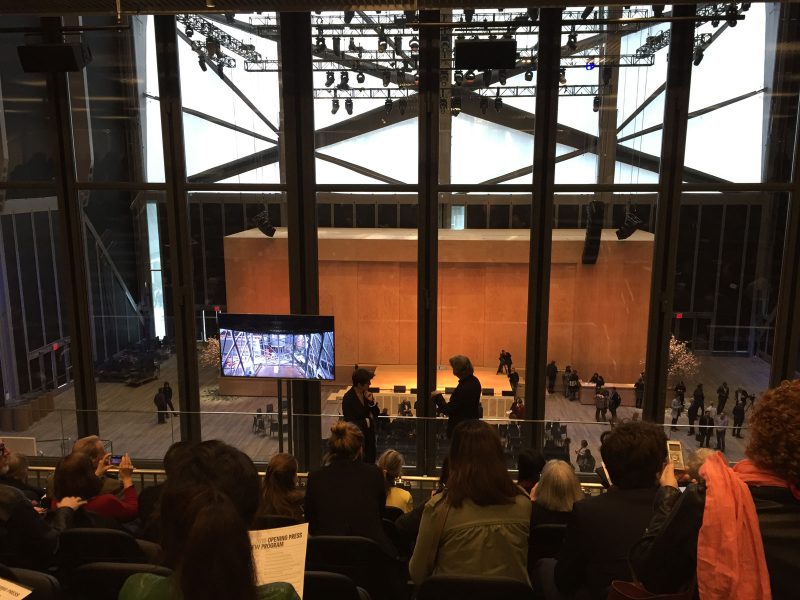
To find out more about The Shed and to check out the current and upcoming lineup of programs and events, see The Shed’s website. Liz Diller will be speaking about The Shed on behalf of Diller Scofidio & Renfro as this year’s recipient of the Center for Architecture and Design and AIA Philadelphia’s 34th Louis I. Kahn Award. For more information and tickets, see the Center for Architecture website.
More Photos

